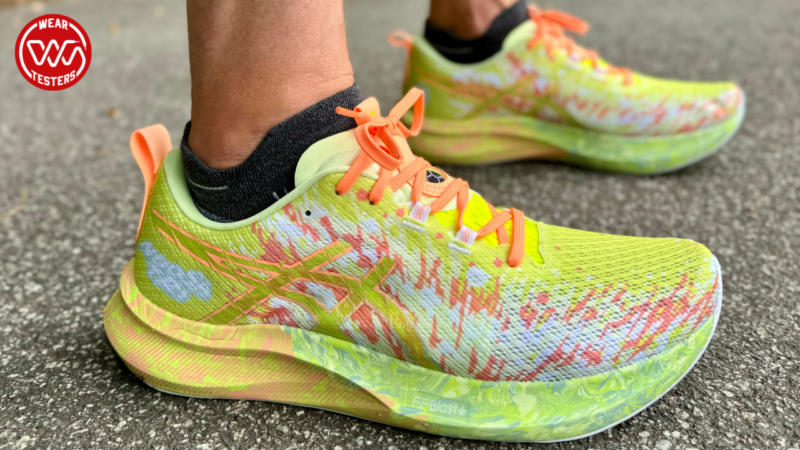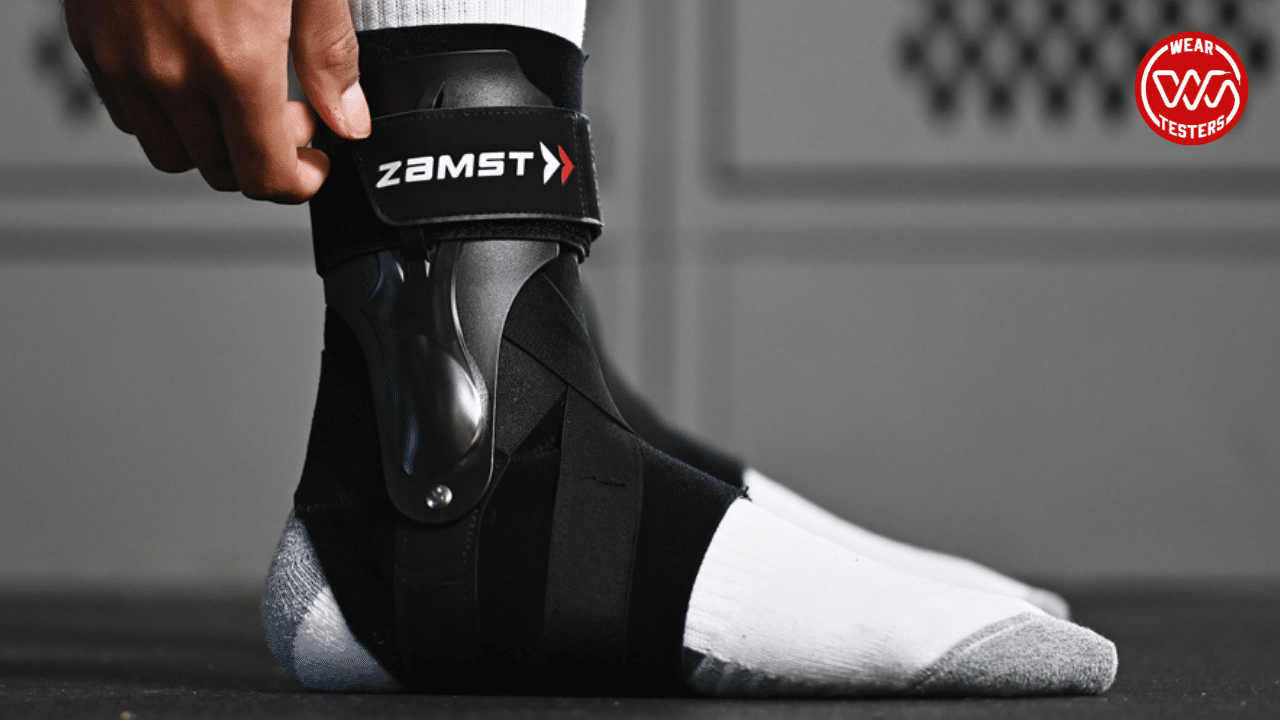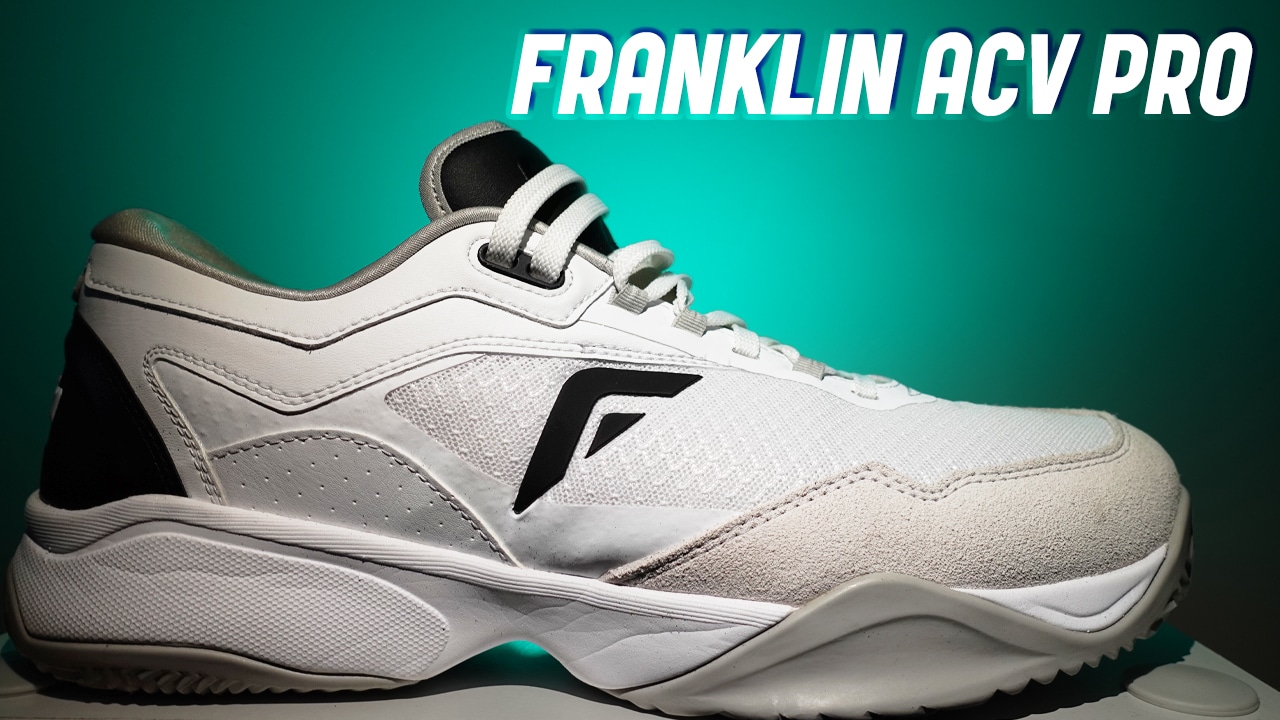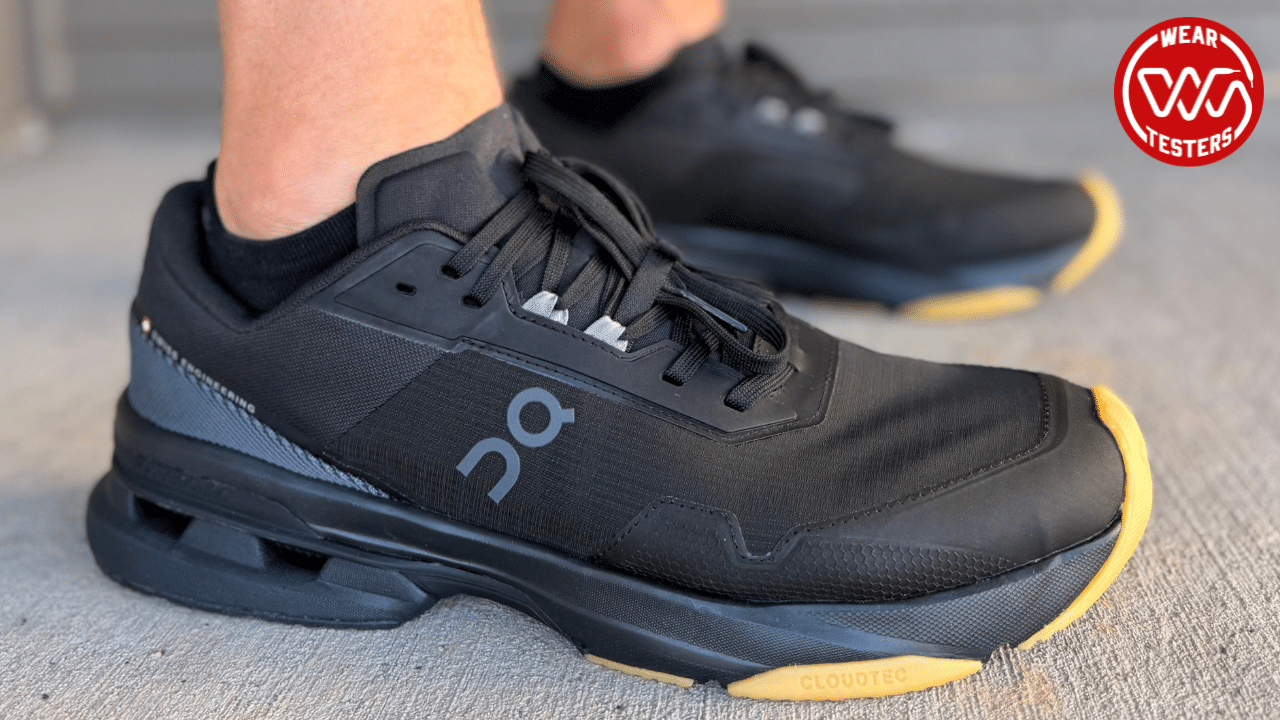Annie: The Asics Noosa Tri has enjoyed stretches of nearly mythic status in the tri community, or so I’m told. And while any hope of my own glory as a triathlete was snuffed out long ago by my insurmountable aversion to open water swimming, the Noosa Tri is nonetheless a shoe I’ve always been oddly curious to, well, tri (Editor’s Note: whomp whomp).
I can neither confirm nor deny whether my initial interest was largely based on aesthetics. Oh, who am I kidding? I’m a child of the 90s who loves bold colors and thought the Noosa Tri looked cool. I am who I am.
Even so, superhuman triathletes and runners alike have plenty of other reasons to be interested in the Asics Noosa Tri 16 – reasons like a no-fuss upper with pull tabs that promise smooth, efficient transitions, or snappy midsole geometry that promises, um…smooth…efficient…transitions. All the transitions.
As far as updates go, the first thing those familiar with the Noosa Tri may notice is that Asics has traded the Flytefoam midsole for one made of FF Blast+. FF Blast+ (and FF Blast+ Eco) can be found in lots of other staple Asics models and has a comparatively softer feel with a nice bit of response.
In addition to the midsole switch, the company has refined the engineered mesh upper and even swapped the AHARPLUS outsole for heartier ASICSGRIP.
That sounds like pretty much the whole shoe had a makeover, but let’s see how it all shook out when the ASICSGRIP hit the road (or light trail, because it’s good stuff).
I’ll cover the angle of a bright-eyed, bushy-tailed, first-time Noosa Tri user. And Drew can give us perspective on how this 16th iteration compares to the long line of predecessors that gave the Noosa Tri its quirky, but well-established reputation.
Asics Noosa Tri 16
Release Date: August 2024
Price: $135
Weight: Men’s 7.6 oz., Women’s 6.5 oz.
Drop: 5mm
Sizing: True to size
- Rundown: The Asics Noosa Tri 16 is a versatile, fun, and snappy shoe that could use a $5-10 price cut and the return of those bungee laces.
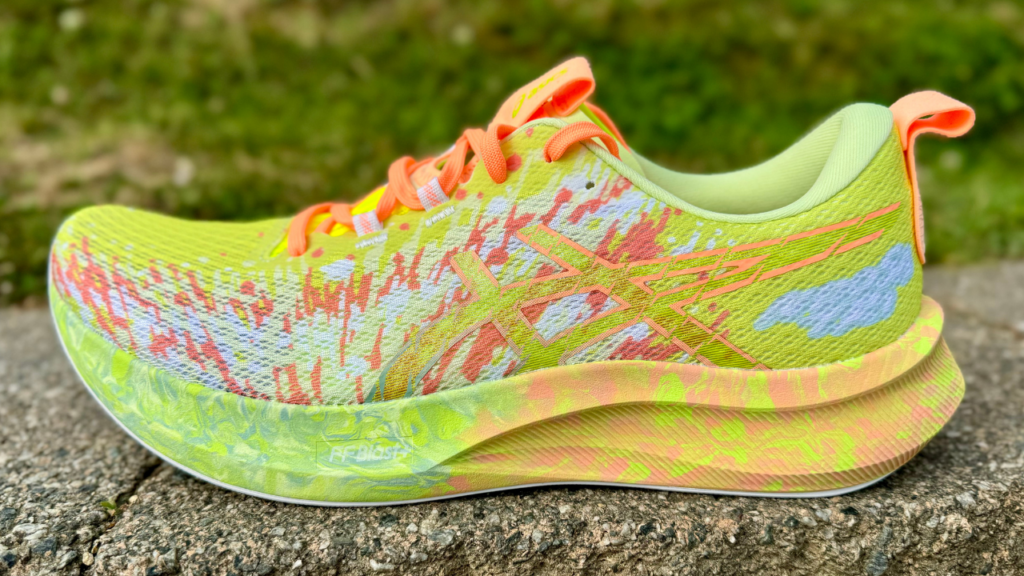
The Ride
Annie: While the Asics Noosa Tri 16 was comfy and forgiving, the feeling underfoot is no squish fest. The foam compresses enough to feel protective, but the rebound is swift. I straight up had fun running in the Noosa Tri 16.
The setup avoids the sort of stilted ride I occasionally experience if a rocker’s timing doesn’t line up with my gait and/or if the drop is too pronounced for my (mostly) midfoot strike.
Here, the midsole geometry, with its well-placed rocker and noticeable (but not too demanding) toe spring, combines harmoniously with the FF Blast+. And some lateral midsole flare near the ball of the foot interplays with those elements so that you really find yourself loaded onto your big toe to push off effectively. The result was a ride that was peppy and responsive with super quick transitions that kept me ticking over across a wide variety of efforts and durations.
While recovery paces felt natural and comfortable, the Noosa Tri 16 really shone when picking things up. While it’s not going to have the same pop as a plated shoe or a high rebound superfoam, the ride was consistently lively for anything from marathon effort to bursts of mile pace. I’d say I most enjoyed it in the marathon-to-10K pace range. But the Noosa Tri 16 truly can run (*cough cough) the gamut with an uncommon versatility.
The Noosa Tri 16 even had legit long run prowess for me. I took it out for a 2.5-hour progression run, and the cushioning was up to the task. The lightweight feel was an obvious boon, and the snappy ride made for fun, carefree miles. The upper was breathable, and I had no issues with comfort in even exceedingly hot conditions.
How was the experience for you, Drew? I’m curious if the versatility held up at altitude – and I’m referring both to your recent move to Colorado and to your 6’6” height.
Drew: I can back up everything Annie said above about the Asics Noosa Tri 16 with a couple exceptions that most likely have to do with our relative sizes (Editor’s Note: think Gandalf and Frodo). It’s a versatile shoe that picks up speed nicely, feels better at quicker than recovery/easy paces, is responsive, and sports a simple, effective build.
What I can’t agree with is the Noosa Tri 16’s long run readiness. At 6’6” and just under 200 pounds (Editor’s Note: under…sure) going longer than 8ish miles made the FF Blast+ just feel kinda flat. High level triathletes typically sport smaller builds so I’m not faulting Asics for this choice. The shoe industry needs shoes built for different types of runners. I just run up against the shoe’s limitations as the mileage increases.
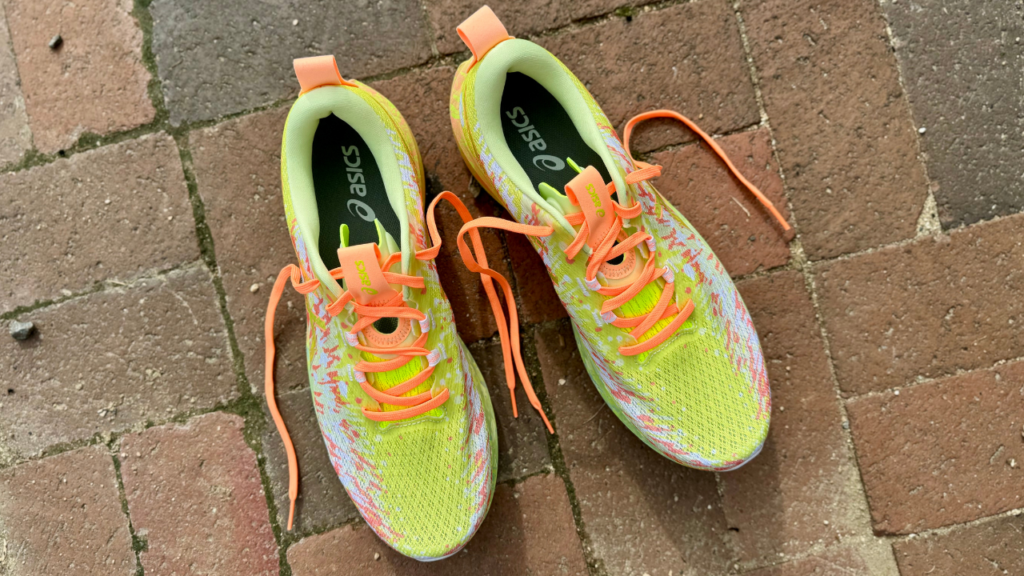
Stuff to Note
Annie: Despite it being an ultimately positive thing to definitively load the big toe joint (super technical term, I’m sure – somebody call Doctors of Running ‘cause I’m clearly out of my depth…), I did need to give my body a brief second to recognize the minor shift and adapt. This is perhaps just an indicator that I have some strengthening/mobility work to do on my end more than anything else. But it could also be worth noting for those who may already struggle with easily straining or overworking that area.
In a similar vein, I want to mention that Asics categorizes the Noosa Tri 16 as neutral and/or for the underpronator. While I was always able to firmly plant on the platform and never felt any instability, I was aware of the midsole’s lateral flare at slower recovery paces. That’s totally a selling point for supinators. But those couple of elements could leave runners who significantly overpronate somewhat vulnerable. It’s just a matter of knowing how your unique gait may respond.
Did you notice anything along those lines, Drew, or is it a me thing?
Drew: As a runner who can supinate as his form breaks down because he’s run a lot of miles that week, I loved the geometry of the Noosa Tri 16 and the way it angled me back towards my also underutilized big toe. But, as Annie pointed out, overpronators need to take note as this will likely not be the best experience.
Also, I have one more thing that needs mentioning. Previous iterations of the Noosa Tri came with both regular laces AND bungee laces. Alas, the typically included bungee laces were nowhere to be found. Those laces (to help triathletes to quickly put on their shoes during transitions) and the smooth interior (meant for those oddballs that don’t want to wear socks) were my favorite parts of the Noosa Tri. Those features made it different than so many other running shoes on the market. It would have been better if the Noosa Tri had dispensed with the normal laces in favor of the bungees and kept more of its unique DNA. Maybe someone at Asics is reading this and this can be corrected next year.
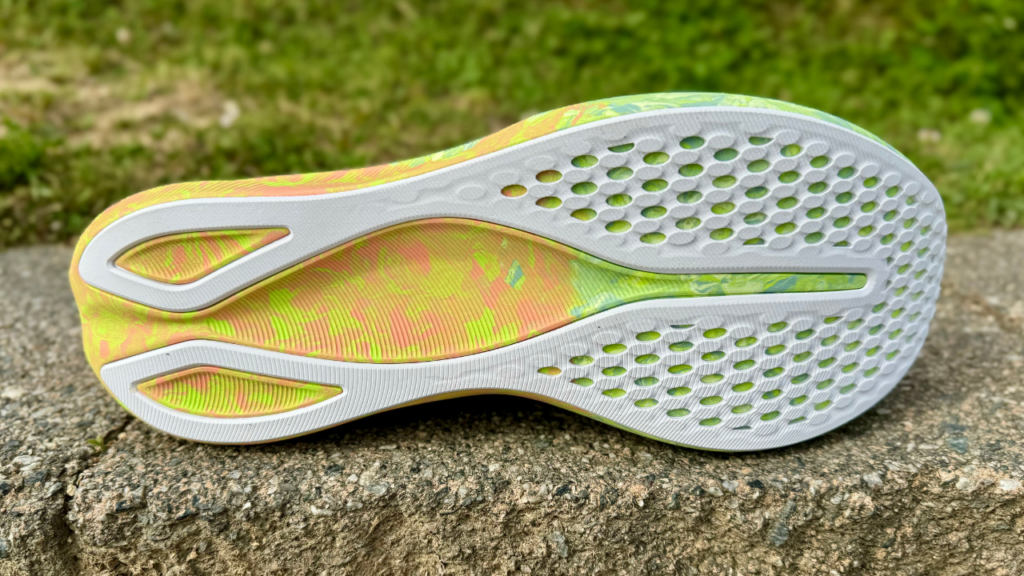
Pros
- Lightweight
- Versatile
- Fun
- Great grip
- Comfortable
- Breathable
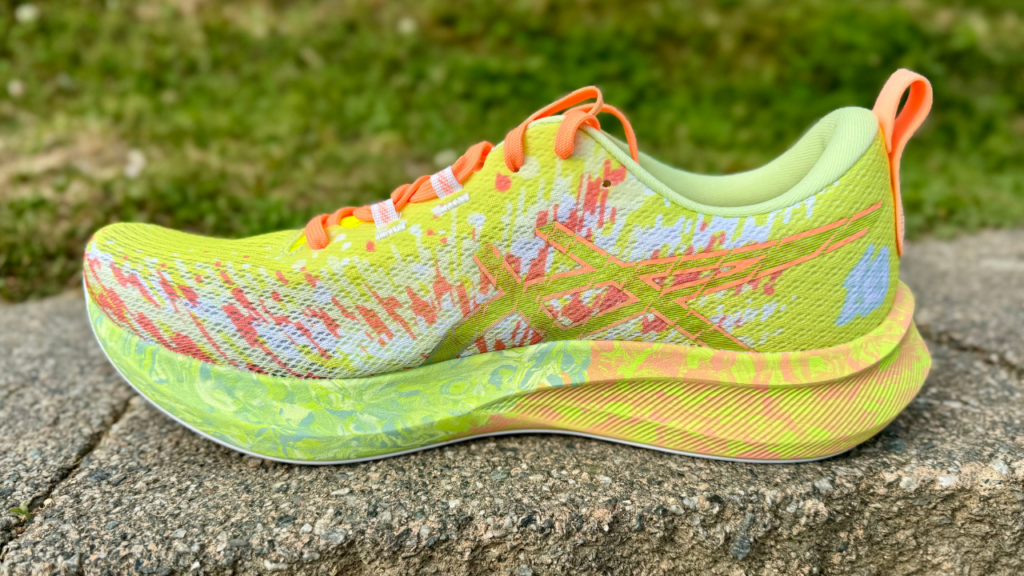
Cons
- Distinctive ride geometry may not be friendly to overpronators
- No bungee laces
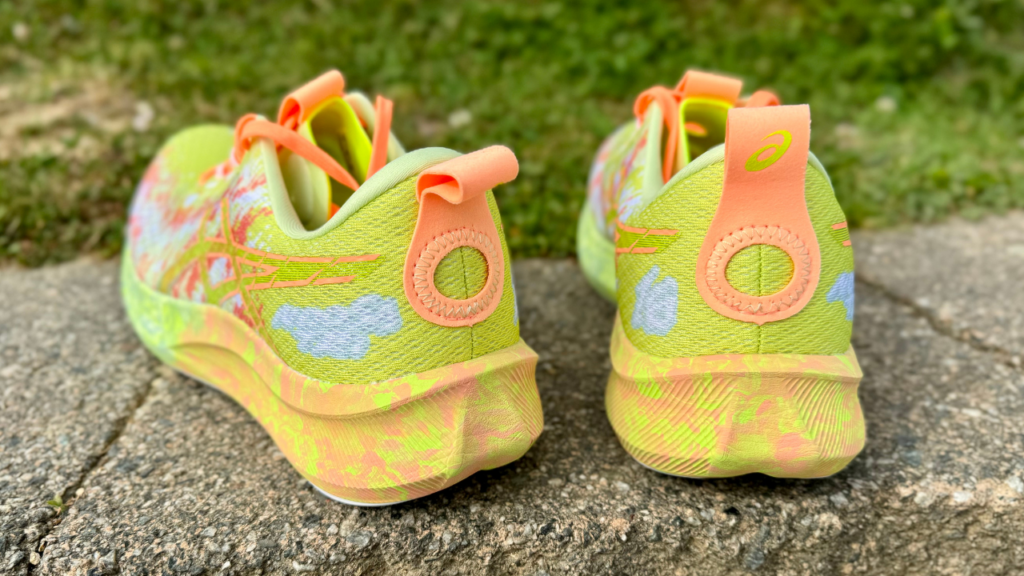
Fit/Sizing of the Asics Noosa Tri 16
Annie: I’ll first say that the lockdown, which was really solid, comes primarily from the upper’s fit alone, without much responsibility placed upon the laces. In fact, I didn’t have to do any cinching at all. I could just tie the laces and forget about it.
The simple answer when it comes to sizing is that some runners may want to go up half a size due to the Noosa Tri 16 coming up a little short in length. For me, however, the sizing and fit of the Asics Noosa Tri 16 were spot-on in my (most) typical size.
For context, I most often wear a women’s standard width 6.5 (which is what I wore here in the Noosa Tri 16), as it’s usually the safest bet. But I run rather “short for my size” yet also have a wider foot, specifically at the ball of the foot.
I have to wonder if the close-fitting midfoot and the slightly short sizing are reflective of the design team imagining potentially sockless wearers (like many of our triathlete friends who look to quicken the on/off process during transitions). For what it’s worth, I wore my usual ultra light performance sock and was content; but like I said, I run short and stubby for my size.
Drew, you typically have far less idiosyncratic sizing needs. How was the fit for you?
Drew: Annie is correct, the Asics Noosa Tri 16, and the previous models in the series, run just a touch short. I’m not sure if it’s for the sockless among us but that’s a good theory.
In practice, the slight lack of length wasn’t enough to cause problems, even as my feet expanded on my ill-fated longer runs.
And while the midfoot is narrower than expected, the forefoot and heel have good room. This shoe will work for some wide footers, but not all, dependent on how much beef one carries at the midfoot.
The midfoot is fairly tall though. If you have a high volume foot or super high arch, the Noosa Tri 16 should still work for you.
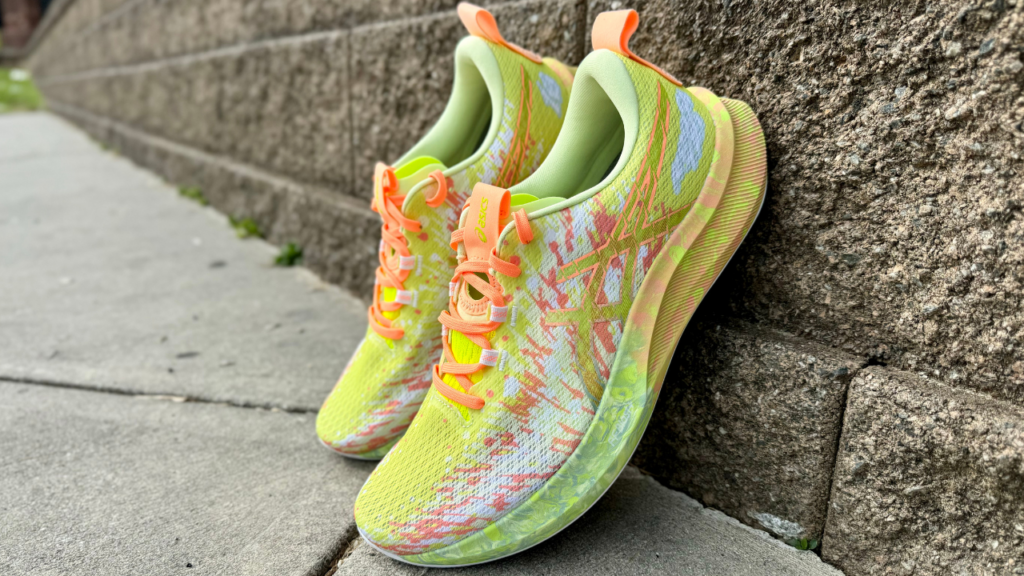
Is the Asics Noosa Tri 16 worth $135?
Annie: Did I get $135 worth of enjoyment out of the Noosa Tri 16? I certainly did.
Did I wish the Noosa Tri 15 cost $5 less? Yep. But I can’t really complain when we’ve seen lots (I mean lots) of incremental price increases this year from plenty of brands and across lots of models. And while that never lessens the sting, we are also getting a highly versatile, uptempo daily trainer for less money than just about any of its competitors in the category.
Given the fact that the Noosa Tri 16 now sports virtually the same foam as the $140 Novablast 4 (which has the Eco version of FF Blast+), runners may also be curious about what really sets them apart. There is the obvious difference in stack height, with the Novablast sporting decidedly more cushion in the heel in particular and a more modest few millimeters of additional stack in the forefoot.
But in practice, I don’t find the extra stack necessarily affords me more distance capabilities in the Novablast. In my case, the main distinction is really in how completely different the ride geometries feel (and the fit). They seem to simply favor different running styles and preferences.
For my part, the Noosa Tri 16 favors my shorter strides and adapts well with a quick, consistent turnover regardless of effort. The Novablast line feels like a more bounding, relaxed experience to me, and its geometry and midsole implementation don’t offer me the same, repeatable timing with my stride. I ultimately get a more natural feel and a little more pace versatility out of the Noosa Tri 16 as a result.
Drew, how do you think the Noosa Tri fits with its price point and its counterparts?
Drew: First, with only that $5 price difference I’d personally choose the Novablast 4 over the Noosa Tri 16. That won’t be the same for everyone but larger runners will appreciate the extra foam and stability that the Novablast 4 offers.
Asics could make it a much harder choice by pricing the Noosa Tri 16 at $130 or $125. I think that’s the sweet spot for Noosa Tri. If you can snag a $10 or 10% off coupon, then you’ll feel a lot better about the value you get out of the Noosa Tri 16.
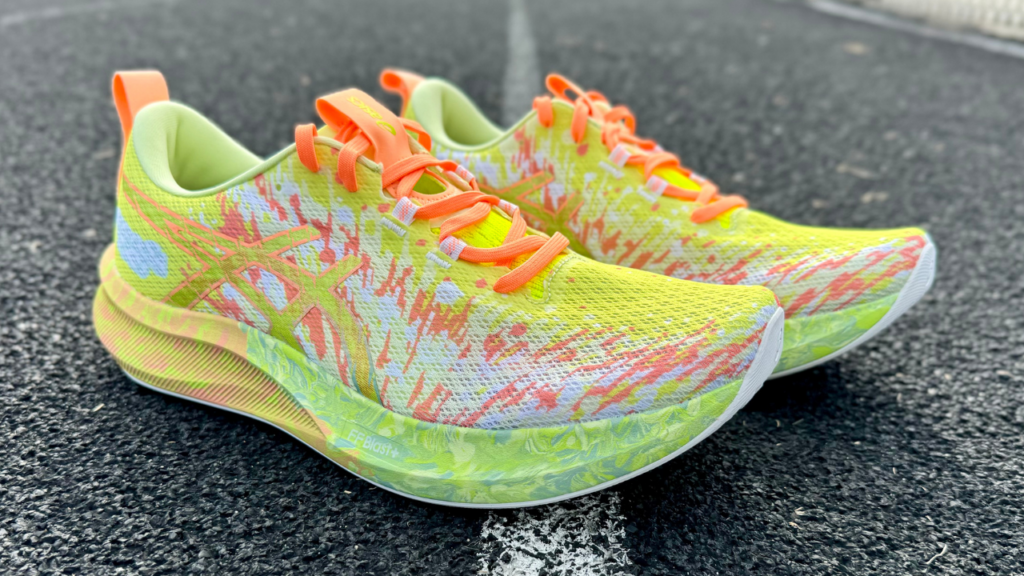
Asics Noosa Tri 16 Summary
Annie: I’m into it. If you enjoy FF Blast+ but the heel stack of the Novablast series can be a bit unwieldy to you at times, I’d encourage you to check out the Asics Noosa Tri 16. Its geometry makes for a smooth, snappy ride, resulting in a highly versatile, uptempo daily trainer that offers a lot of enjoyment for a very reasonable price.
Drew: The Asics Noosa Tri 16 is a versatile, fun shoe that could use a $5-10 price cut and the return of those bungee laces, but is overall a serviceable and dependable running shoe option…especially if you’re not a giant.
I always think of the Noosa Tri as that weird shoe in Asics’ lineup and can’t help but think this year’s iteration lost some of that eccentric nature that got it a cult following in the first place. So, if you don’t mind that some of its stranger features have disappeared, you’ll once again find a Noosa Tri that does the job.
How does the Author Run?
Drew Whitcomb (age 42, 6’6″ 195lbs): Runs daily with a once a week rest day. Runs a lot of miles due to testing needs and a growing affinity for long-distance races. Regularly competes in marathons, half-marathons, 10k, and 5k races.
Annie Keris (age 39, 5’0” 117lbs): Typically follows a “two days on, one day off” running routine. “On” days include daily miles, speed work, and long runs. An “off” day usually involves yoga and mobility/recovery work. Enjoys occasional racing but perhaps enjoys the training process even more. Gravitates most toward the half marathon distance, but ventures into the 10k and 5k as well. The marathon is thus far uncharted territory…
Disclosure
While Asics did send a pair of the Noosa Tri 16 to facilitate this review, the company had no involvement in this review, didn’t receive an advance look at it, and has not attempted to influence it.

